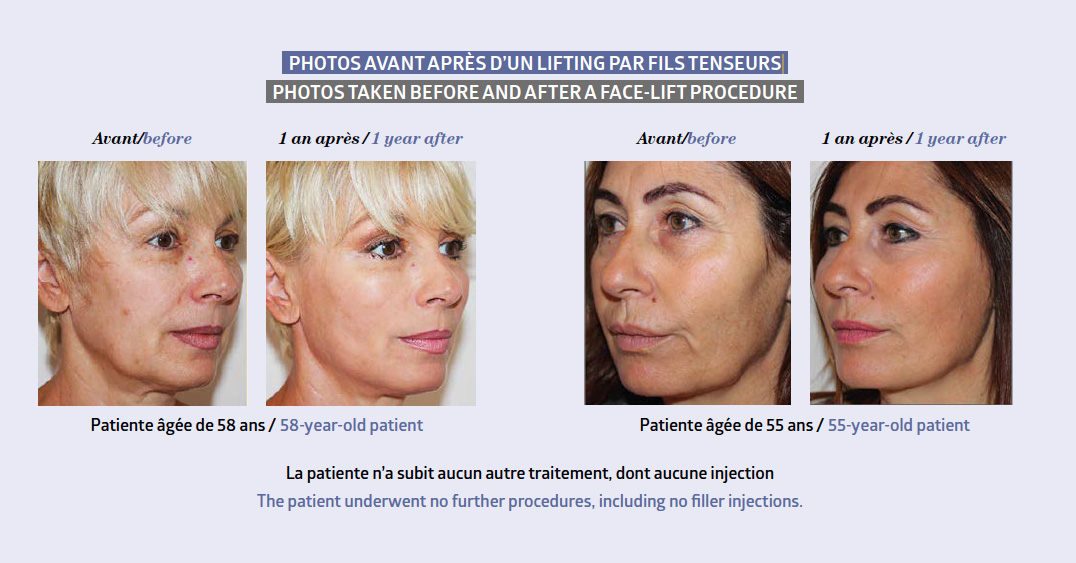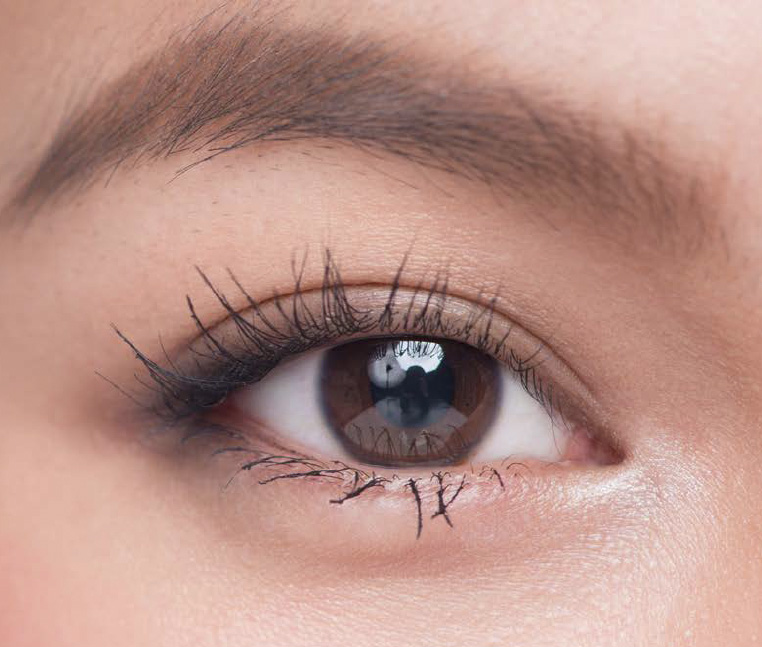by Dr Sophie Menkes
Our skin quality says a lot about us: who we are, how we’re feeling, our lifestyle…It is something vital that comes from the inside and is projected on the outside.
There are two fundamental elements for our patients. The first is health: our skin should reflect our vitality. The second is youth: our skin should reflect our freshness. Healthy skin should be luminous, radiant. It should be well-nourished, clean, free from sensitivity and should look energised. Young skin has a lovely, even complexion, a refined texture, and looks elastic. This kind of skin makes us feel confident: is has no dilated pores, no scars, it isn’t oily, it has no wrinkles.
The skin is an essential organ because it protects us by forming a physical barrier. The skin contains numerous nerve endings that allow us to feel pain. The skin also regulates our temperature. It’s an important blood reservoir because 8 to 10% of our total blood volume is found in the skin. The skin also enables our body to secrete mineral salts, carbon dioxide and other molecules.
The skin’s structure is extremely complex: the epidermis is a barrier to keep out water, germs and chemical substances, the dermis (papillary and reticular) gives it strength and rigidity, and the subcutaneous tissue contains the arteriovenous system, the glands and the adipose tissue.
Many factors affect the skin in a positive or negative way. The main negative factor is the environment, namely the sun, followed by smoking. Hormone deficiency before or after the menopause also affects the skin quality. It is clear that, if we sleep well, eat well and are relaxed then our skin will be better than if we work long hours, have to get up at night with our children, are stressed, smoke or are always on a diet.
And age, of course! With age, the skin’s texture deteriorates, and the lack of hormones when we are menopausal aggravates the situation. On average, we lose 7% of our skin’s thickness every 10 years. There are some predisposing genetic factors too: some people can smoke and sunbathe but still have great skin. Women do not only want flawless skin on their face. During the party season, when they want to wear sexy clothes, they also want a flawless décolleté.
Neck and décolleté
The neck and décolleté are areas which give away a woman’s true age, so we must do everything we can to preserve them. The beauty of the bust and neck depends on the quality of their cutaneous envelope. Often exposed to external aggressions (significant changes in temperature), the skin on the neck and décolleté suffers from accelerated aging, which is responsible for aesthetic flaws and sagging breasts. Over time, horizontal lines appear on the neck and the skin begins to sag.
 On the décolleté, vertical lines begin between the breasts and finish at the collarbone. This is all aggravated by sun exposure, smoking and the position you sleep in (on your side or on your front). We must therefore treat the neck and décolleté with as much care and regularity as the face, which is something women often forget to do. The skin on the neck and décolleté is very thin and fragile. This fragility can partly be explained by their lack of lipids and sebaceous glands, which are needed to efficiently nourish the skin. These areas also suffer from skin sagging, and this can occur fairly early if we do not take care of these areas properly. The aim of treating the neck and décolleté with Skinboosters is to achieve a good skin texture for hydrated, smooth skin that is nice and elastic, supple and firm with an even colour, plenty of radiance and no pigmentation marks or redness.
On the décolleté, vertical lines begin between the breasts and finish at the collarbone. This is all aggravated by sun exposure, smoking and the position you sleep in (on your side or on your front). We must therefore treat the neck and décolleté with as much care and regularity as the face, which is something women often forget to do. The skin on the neck and décolleté is very thin and fragile. This fragility can partly be explained by their lack of lipids and sebaceous glands, which are needed to efficiently nourish the skin. These areas also suffer from skin sagging, and this can occur fairly early if we do not take care of these areas properly. The aim of treating the neck and décolleté with Skinboosters is to achieve a good skin texture for hydrated, smooth skin that is nice and elastic, supple and firm with an even colour, plenty of radiance and no pigmentation marks or redness.
The products used
Skinboosters made their appearance in aesthetic medicine in 2004. Now, they are used for a new trend: a more natural look, without any excess. The word was coined by Galderma laboratories when they launched a very mildly cross-linked hyaluronic acid designed for rehydrating and revitalising thin and lifeless skin. It allows us to treat the skin without affecting its volumes, unlike more cross-linked hyaluronic acids. Skinboosters contain a very mildly cross-linked hyaluronic acid which is fluid and easy to inject into the mid dermis, for short-term efficacy, or a more viscous version for a longer-term effect. It makes the skin firmer and more elastic as it is able to hold 1,000 times its weight in water. It boosts fibroblast synthesis by reconnecting them. This improves the skin quality by filling fine lines and improving the skin’s texture, hydration and elasticity for up to 6 months. Skinboosters can be used to treat the face, neck, décolleté and hands.
Method and protocol
The gel is injected into the dermis. Several injection techniques can be used: multiple injections spaced a centimetre apart, using a 30G 4mm short-bevelled needle or 13mm long-bevelled needle. Or, it can be injected into the subcutaneous layer using a cannula, which reduces the risk of bruising. This product must be injected into the mid dermis and not into the hypodermis.
Skinboosters are recommended for younger skin: they enable us to preserve our youth capital and delay the appearance of lines. They tone, beautify and rehydrate the skin. They can also be used on mature skin, to stimulate, repair fine lines and smooth the skin. Depending on the hyaluronic acid used, one session is required, with a top-up session one month later, if required. With other products, three sessions are required at 30-day intervals. These sessions should be repeated every six months. Every laboratory has its own protocol. There are several types of Skinbooster products, and they are selected according to the patient’s requirements and skin type. We can even combine the techniques according to the treatment area. Meshing the techniques together to cover all treatment areas allows us to rehydrate and revitalise the skin, erasing any blemishes and fine lines. The product should be easy to inject, long-lasting, well tolerated and be as comfortable as possible for the patient. It should be well absorbed and offer a good firming effect. It must be easy to spread or model and should yield a visible improvement. In-vitro tests of the latest Skinboosters on the market show an improvement in elasticity and in-depth skin hydration, proven by an increase in hydration markers and an increase in the expression of the biological markers of skin elasticity.
Cell rejuvenation
Skinboosters lead to cell rejuvenation by boosting hydration and recreating a favourable environment. They help activate the fibroblasts and increase exchanges between the cells and the extracellular matrix. They stimulate cell growth, densify the dermis by producing collagen, protect the cells, and regenerate the elastic fibres. We want to achieve firm, radiant, hydrated skin by injecting products that are completely compatible and perfectly resorbable. Skinboosters are an excellent complement to fillers. They rejuvenate the skin by helping to maintain its overall firmness and radiance. They help fight against aging and make the benefits of fillers last longer. They are an integral part of the anti-aging arsenal, as long as a flawless injection technique is used and any counterindications are taken into account. They provide patients with a perfect triad therapy: safety, physical correction and psychological satisfaction.
 Dr Sophie Menkes: Aesthetic physician, Medical Director at the Forever Institut Geneva (Switzerland). Specialist in aesthetic gynaecology, regenerative medicine and internal medicine. Physician trainer in HA and Toxins for Allergan; physician trainer in Ulthera and Cellfina for Merz; physician trainer for aesthetic gynaecology, microfat and nanofat grafting. Medical speaker at international courses and congress.
Dr Sophie Menkes: Aesthetic physician, Medical Director at the Forever Institut Geneva (Switzerland). Specialist in aesthetic gynaecology, regenerative medicine and internal medicine. Physician trainer in HA and Toxins for Allergan; physician trainer in Ulthera and Cellfina for Merz; physician trainer for aesthetic gynaecology, microfat and nanofat grafting. Medical speaker at international courses and congress.















